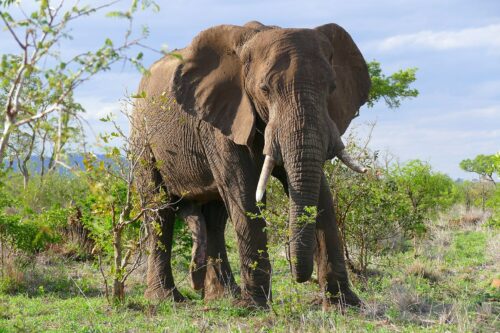Image courtesy of Wikimedia Commons.
Africa and Asia are home to some of the largest land animals alive. Grasslands and rainforests conjure up images of massive elephants, hippos, and giraffes. Yet while these large animals, called megafauna, are widespread in Africa and Asia, they no longer roam Europe, Australia, and the Americas. Researcher Advait Jukar from the Yale Institute for Biospheric Studies offers a new, key explanation for this disparity.
Jukar’s research, based on his investigation of fossil sites in India, aimed to verify the coevolution hypothesis. This hypothesis, first proposed by Paul Martin in the 1960s, argued that large animals persisted in Africa and Asia due to the species’ ability to evolve and cope with the pressures of humans moving into their habitats. Martin explained that this coevolution was not present in other parts of the world, where humans drove other megafauna to extinction through hunting and habitat alteration.
Jukar’s team studied fifty-one fossil sites in India to determine the magnitude of megafauna extinction. They found areas with low magnitudes of extinction when humans were present, corroborating the importance of coevolution for species survival. “If you have different species of humans, including our own, that have interacted with these species of large animals and their ancestors, then these lineages potentially evolved strategies to cope with humans,” Jukar says.
While the study provides compelling evidence for the coevolution hypothesis, the exact reason megafauna withstood human contact in Africa and Asia when they failed to survive in other parts of the world is still unclear. Jukar’s team plans to collect more information in the form of bone surveys and chemical analysis. Although many of these large animals successfully evolved to survive our arrival in their ecosystems, we must still strengthen conservation efforts to safeguard their continued presence in the wild.
Citations:
Jukar, A., Lyons, S., Wagner, P., & Uhen, M. (2021). Late Quaternary extinctions in the Indian subcontinent. Palaeogeography, Palaeoclimatology, Palaeoecology, 562, 110137. doi:10.1016/j.palaeo.2020.110137

